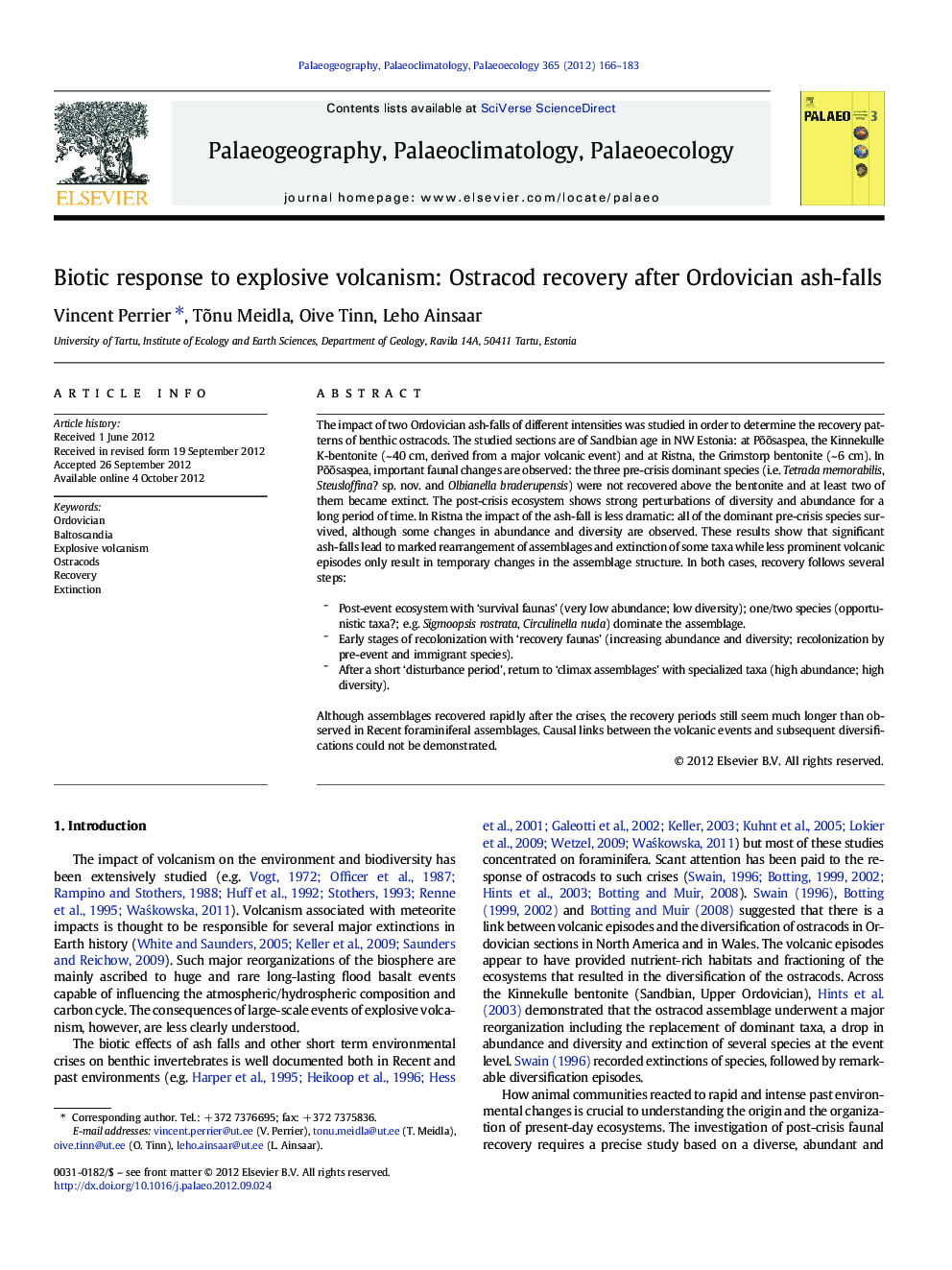| کد مقاله | کد نشریه | سال انتشار | مقاله انگلیسی | نسخه تمام متن |
|---|---|---|---|---|
| 4466735 | 1622219 | 2012 | 18 صفحه PDF | دانلود رایگان |

The impact of two Ordovician ash-falls of different intensities was studied in order to determine the recovery patterns of benthic ostracods. The studied sections are of Sandbian age in NW Estonia: at Põõsaspea, the Kinnekulle K-bentonite (~ 40 cm, derived from a major volcanic event) and at Ristna, the Grimstorp bentonite (~ 6 cm). In Põõsaspea, important faunal changes are observed: the three pre-crisis dominant species (i.e. Tetrada memorabilis, Steusloffina? sp. nov. and Olbianella braderupensis) were not recovered above the bentonite and at least two of them became extinct. The post-crisis ecosystem shows strong perturbations of diversity and abundance for a long period of time. In Ristna the impact of the ash-fall is less dramatic: all of the dominant pre-crisis species survived, although some changes in abundance and diversity are observed. These results show that significant ash-falls lead to marked rearrangement of assemblages and extinction of some taxa while less prominent volcanic episodes only result in temporary changes in the assemblage structure. In both cases, recovery follows several steps:–Post-event ecosystem with ‘survival faunas’ (very low abundance; low diversity); one/two species (opportunistic taxa?; e.g. Sigmoopsis rostrata, Circulinella nuda) dominate the assemblage.–Early stages of recolonization with ‘recovery faunas’ (increasing abundance and diversity; recolonization by pre-event and immigrant species).–After a short ‘disturbance period’, return to ‘climax assemblages’ with specialized taxa (high abundance; high diversity).Although assemblages recovered rapidly after the crises, the recovery periods still seem much longer than observed in Recent foraminiferal assemblages. Causal links between the volcanic events and subsequent diversifications could not be demonstrated.
Figure optionsDownload high-quality image (242 K)Download as PowerPoint slideHighlights
► Changes in ostracod assemblages across two Ordovician bentonites were studied.
► These ash falls had marked effects on faunal composition, diversity and abundance.
► Recolonization comprised three steps: survival, recovery and a ‘disturbance’ period.
► The recovery seems much longer than that recorded in like studies of modern faunas.
► Causal links between the ash falls and diversifications could not be demonstrated.
Journal: Palaeogeography, Palaeoclimatology, Palaeoecology - Volumes 365–366, 1 December 2012, Pages 166–183